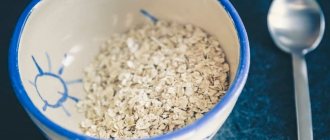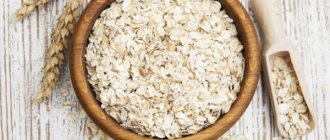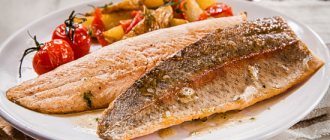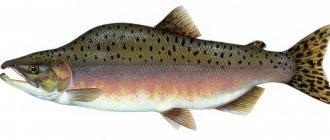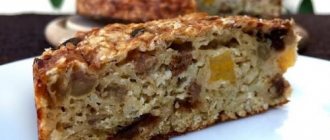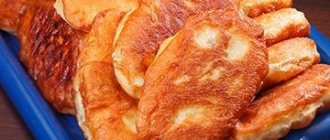Modern society is increasingly thinking about healthy eating. After all, it is becoming increasingly difficult to find truly healthy and environmentally friendly products on store shelves. One such product is oatmeal. A tasty and healthy oatmeal porridge is prepared from these flakes. That's why oatmeal is often called oatmeal. People who pay attention to proper diet choose oatmeal (oatmeal) for breakfast. It has been scientifically proven that oatmeal is a light and healthy food. Which is a very good way to start your day. But in order to prepare a truly tasty and light oatmeal porridge, you need to follow the proportions according to the recipe. Very often in recipes the amount of ingredients is measured in grams. But there are not always scales available to measure weight in grams; fortunately, you can use an ordinary spoon. This is what our article will be about, we will answer the question how many grams of oatmeal are in a tablespoon and a teaspoon.
Attention! Recipes are very good to use when you need to calculate the number of servings. This is good when you are afraid to cook a little or a lot.
How many grams are in a tablespoon of oatmeal (oatmeal)?
1 tablespoon holds 16 grams of oatmeal (heaped)
One tablespoon contains 12 grams of oatmeal (without a slide)
In the table below, the calculations were carried out with ordinary dry oatmeal of the Hercules type, which is the most popular in our latitudes.
| Type of spoon | Weight in grams | Calorie content of a spoon |
| A heaping tablespoon of oatmeal is | 16 grams | 56 calories |
| A level tablespoon of oatmeal is | 12 grams | 42 calories |
| A heaping teaspoon of oatmeal is | 6 grams | 21 calories |
| A level teaspoon of oatmeal is | 4 grams | 14 calories |
How many grams of oatmeal are in a teaspoon?
1 level teaspoon of oatmeal = 4 grams
A heaping teaspoon of oatmeal = 6 grams
How to measure oatmeal without a scale in grams using spoons?
- 100 grams of oatmeal = 6 heaped tablespoons + 2 heaped teaspoons.
- 90 grams of oatmeal = 5 heaped tablespoons + 1 heaped teaspoon + 1 heaped teaspoon.
- 85 grams of oatmeal = 5 heaped tablespoons + 2 heaped teaspoons.
- 80 grams of oatmeal = 5 heaped tablespoons + 1 heaped teaspoon.
- 75 grams of oatmeal = 5 heaped tablespoons of oatmeal.
- 70 grams of oatmeal = 4 heaped tablespoons + 1 heaped teaspoon.
- 60 grams of oatmeal = 4 heaped tablespoons of oatmeal.
- 50 grams of oatmeal = 3 heaped tablespoons + 1 heaped teaspoon.
- 40 grams of oatmeal = 2 tablespoons + 2 heaped teaspoons of oatmeal.
- 30 grams of oatmeal = 2 heaped tablespoons.
- 20 grams of oatmeal = 2 heaped teaspoons + 2 level teaspoons.
You will also be interested to know: how many grams of sugar are in a teaspoon and how many grams of salt are in a teaspoon and how many grams of oatmeal are in a glass.
We hope you will find the information useful, how many grams of oatmeal (for example, Hercules) fits in a teaspoon and a tablespoon, so that it is convenient to measure the required weight at home without scales. We leave our useful recommendations and reviews on the topic of how many grams of dry oatmeal are in one spoon (tablespoon or teaspoon) in the comments below and save the review in bookmarks or social networks.
Inna Vilkova
Hi all! I am Inna, the author of articles on this blog. An enterprising housewife with more than 4 years of experience in a cleaning company. I will be happy to answer all questions on the topic of articles in the comments! Always ready to share my useful tips!
Save on social networks:
Table weight of prepared (raw) oatmeal in a spoon
| Type of spoon | Weight in grams |
| A heaped tablespoon of boiled oatmeal is | 35 grams |
| A level tablespoon of boiled oatmeal is | 25 grams |
| A heaped teaspoon of boiled oatmeal is | 15 grams |
| A level teaspoon of boiled oatmeal is | 7 grams |
The weight of the finished oatmeal may vary! It all depends on how thick or thin the oatmeal you prepared. In our table, we took the average value.
Attention! Oatmeal (oatmeal) is not only porridge, but rather it is the fastest way to get a tasty and healthy dish. Oatmeal is even used in cosmetology and medicine.
- 30 grams of oatmeal is how many spoons? 30 g of oatmeal is 2 tablespoons of oatmeal (heaped)
- 40 grams of oatmeal is how many spoons? 40 g of oatmeal is 2 tablespoons of dry oatmeal (heaped) plus 2 teaspoons of oatmeal (heaped)
- 50 grams of oatmeal is how many spoons? 50 g of oatmeal is 3 tablespoons of oatmeal (heaped) plus 1 teaspoon of oatmeal (heaped)
- 60 grams of oatmeal is how many spoons? 60 g of oatmeal is 4 tablespoons of oatmeal (heaped)
- 70 grams of oatmeal is how many spoons? 70 g of oatmeal is 4 tablespoons of oatmeal (heaped) plus 1 teaspoon of oatmeal (heaped)
- 75 grams of oatmeal is how many spoons? 75 g of oatmeal is 5 tablespoons of oatmeal (heaped)
- 80 grams of oatmeal is how many spoons? 80 g of oatmeal is 5 tablespoons of oatmeal (heaped) plus 1 teaspoon (heaped)
- 85 grams of oatmeal is how many spoons? 85 g of oatmeal is 5 tablespoons of oatmeal (heaped) plus 2 teaspoons of oatmeal (heaped)
- How many spoons is 100 grams of oatmeal? 100 g of oatmeal is 6 tablespoons of oatmeal (heaped) plus 2 teaspoons of oatmeal (heaped)
- 150 grams of oatmeal is how many spoons? 150 g of oatmeal is 10 tablespoons of oatmeal (with a small slide)
- 170 grams of oatmeal is how many spoons? 170 g of oatmeal is 11 tablespoons of oatmeal (heaped) plus 1 teaspoon of oatmeal (heaped)
- 200 grams of oatmeal is how many spoons? 200 g of oatmeal is 13 tablespoons of oatmeal (heaped) plus 1 teaspoon of oatmeal (heaped)
- 250 grams of oatmeal is how many spoons? 250 g of oatmeal is 16 tablespoons of oatmeal (heaped) plus 2 teaspoons of oatmeal (heaped)
| Weight of oatmeal in grams | Number of spoons |
| 30 grams of oatmeal is | 2 heaped tablespoons |
| 40 grams of oatmeal is | 2 heaped tablespoons 2 heaped teaspoons |
| 50 grams of oatmeal is | 3 heaped tablespoons 1 heaped teaspoon |
| 60 grams of oatmeal is | 4 heaped tablespoons |
| 70 grams of oatmeal is | 4 heaped tablespoons 1 heaped teaspoon |
| 75 grams of oatmeal is | 5 heaped tablespoons |
| 80 grams of oatmeal is | 5 heaped tablespoons 1 heaped teaspoon |
| 85 grams of oatmeal is | 5 heaped tablespoons 2 heaped teaspoons |
| 90 grams of oatmeal is | 6 heaped tablespoons |
| 100 grams of oatmeal is | 6 heaped tablespoons 2 heaped teaspoons |
| 150 grams of oatmeal is | 10 heaping tablespoons |
| 200 grams of oatmeal is | 13 heaped tablespoons 1 heaped teaspoon |
| 250 grams of oatmeal is | 16 heaped tablespoons 2 heaped teaspoons |
| 300 grams of oatmeal is | 20 heaping tablespoons |
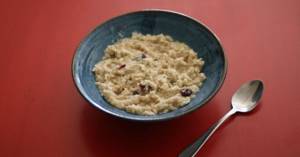
| Number of spoons of oatmeal | Oatmeal weight |
| 1 tablespoon of oatmeal is | 15-16 grams |
| 2 tablespoons of oatmeal is | 32 grams |
| 3 tablespoons of oatmeal is | 48 grams |
| 4 tablespoons of oatmeal is | 64 grams |
| 5 tablespoons of oatmeal is | 80 grams |
| 6 tablespoons of oatmeal is | 96 grams |
| 7 tablespoons of oatmeal is | 112 grams |
| 8 tablespoons of oatmeal is | 128 grams |
| 9 tablespoons of oatmeal is | 144 grams |
| 10 tablespoons of oatmeal is | approximately 150-160 grams |
Attention! In order to measure the weight of oatmeal without errors, we recommend measuring with measuring scales.
We hope you liked our article! Support our project, add our site to your web browser bookmarks. We have a lot of interesting things. For example, a culinary measuring chart. Share the article on social networks. Thank you!
| Nutrient | Quantity | Norm** | % of the norm in 100 g | % of the norm in 100 kcal | 100% normal |
| Calorie content | 305 kcal | 1684 kcal | 18.1% | 5.9% | 552 g |
| Squirrels | 11 g | 76 g | 14.5% | 4.8% | 691 g |
| Fats | 6.2 g | 56 g | 11.1% | 3.6% | 903 g |
| Carbohydrates | 65.7 g | 219 g | 30% | 9.8% | 333 g |
| Water | 12 g | 2273 g | 0.5% | 0.2% | 18942 |
| Vitamins | |||||
| Vitamin B1, thiamine | 0.45 mg | 1.5 mg | 30% | 9.8% | 333 g |
| Vitamin B2, riboflavin | 0.1 mg | 1.8 mg | 5.6% | 1.8% | 1800 g |
| Vitamin B9, folates | 23 mcg | 400 mcg | 5.8% | 1.9% | 1739 |
| Vitamin E, alpha tocopherol, TE | 3.2 mg | 15 mg | 21.3% | 7% | 469 g |
| Vitamin RR, NE | 1 mg | 20 mg | 5% | 1.6% | 2000 g |
| Macronutrients | |||||
| Potassium, K | 330 mg | 2500 mg | 13.2% | 4.3% | 758 g |
| Calcium, Ca | 52 mg | 1000 mg | 5.2% | 1.7% | 1923 |
| Magnesium, Mg | 129 mg | 400 mg | 32.3% | 10.6% | 310 g |
| Sodium, Na | 20 mg | 1300 mg | 1.5% | 0.5% | 6500 g |
| Phosphorus, Ph | 328 mg | 800 mg | 41% | 13.4% | 244 g |
| Microelements | |||||
| Iron, Fe | 3.6 mg | 18 mg | 20% | 6.6% | 500 g |
| Yod, I | 6 mcg | 150 mcg | 4% | 1.3% | 2500 g |
| Cobalt, Co | 5 mcg | 10 mcg | 50% | 16.4% | 200 g |
| Manganese, Mn | 3.8 mg | 2 mg | 190% | 62.3% | 53 g |
| Copper, Cu | 450 mcg | 1000 mcg | 45% | 14.8% | 222 g |
| Zinc, Zn | 3.1 mg | 12 mg | 25.8% | 8.5% | 387 g |
The energy value of oatmeal porridge with water 1 tbsp = 14 g is 305 kcal.
Primary Source: Created in the application by the user. Read more.
How many calories are in oatmeal (oatmeal)
Oatmeal can become not only the basis for nutritious breakfasts, but also an ingredient in a wide variety of dishes - baked goods, desserts, soups. It is used to prepare decoctions and jelly that are good for the stomach, and add it to yoghurts and smoothies. Oatmeal is equally tasty in combination with milk and sweet fruits, and as a side dish for meat and fish. It is mainly boiled and baked - although the flakes can be eaten dry or slightly soaked.
Of course, the choice of oatmeal depends on the degree of processing of the cereal - the weaker the processing, the more nutrients the product retains. You can find out about this by the amount of time required to prepare the porridge: the more it is required, the higher the nutritional value. The most useful from this point of view can be considered “Hercules”
.
It is followed by “Extra”
- from the dense first grade to the fast-cooking third. But instant oatmeal cannot be called either nutritious or healthy.
From oatmeal, oatmeal is obtained (dezhen), which is used for baking bread, cookies, pancakes, pancakes and making jelly. The bran remaining as a waste product from flour production is similar in its effect on the body to whole oats. They are used in dietary nutrition, added to porridge or brewed separately.
Calorie content of oatmeal dishes
varies and depends not only on the degree of processing of the grains, but also on the method of preparation and additives.
| Calorie content of oatmeal, kcal per 100 grams | |||||
| Product | Oat bran | Oat groats | Oat flakes Extra | Oat flakes Hercules | Oatmeal (money) |
| In raw dry form | 246 | 342 | 367 | 352 | 369 |
| With milk | 110 | 102 | 130 | 113 | |
| On the water | 88 | 73 | 92 | 84 | 61 |
| With milk and butter | 146 | 160 | 143 | ||
| On water with butter | 130 | 122 | 114 | ||
| With milk and sugar | 158 | 167 | 163 | ||
| On water with sugar | 138 | 129 | 124 | ||
| With milk, butter and sugar | 190 | 204 | 190 | ||
| On water with butter and sugar | 171 | 166 | 161 | ||
| With honey | 100 | 117 | 129 | 125 | 86 |
| With raisins | 131 | 167 | 161 | ||
| With pumpkin | 63 | 94 | 91 | ||
Application in dietetics
Like all cereals, oats are very beneficial for the body. Its constant use helps reduce blood sugar levels and normalize the functioning of the liver, kidneys and gastrointestinal tract. Oatmeal with water is considered a medicinal and dietary product; By including it in your diet, you can immediately “kill two birds with one stone”: adjust your weight and improve your well-being.
Several diets have been developed based on oatmeal:
- oatmeal mono-diet (due to its severity, it is practiced for no more than 5 days, during which this porridge becomes the only food);
- oatmeal-fruit diet (porridge with a small amount of dried fruit alternates with unsweetened fruits and vegetables for a maximum of 10 days);
- diet 6 cereals (during the week, only one cereal is consumed every day, and on the last day all cereals are mixed);
- Berlin diet (in fact, this is the correct diet in which porridge is eaten for breakfast).
This porridge will be an excellent alternative to chocolates and sweet pastries during snacks. Vegetables, berries, fruits, nuts, honey or low-fat milk will add flavor and some healthy calories. If you don't have a stove or pan at hand, you can eat muesli or oatmeal cookies.
Recipes and calorie content of dishes with oatmeal
- 100 g oatmeal;
- 100 g corn flakes;
- 40 g walnuts;
- 20 g sunflower seeds;
- 20 g;
- 20 g;
- 10 g sunflower oil;
- half a glass of low-fat milk.
Chop raisins and nuts, mix with seeds and flakes. Add butter and honey and dry slightly in the oven. Pour a small portion with milk. 100 grams of this hearty breakfast will contain only 253 kcal.
- 250 g oatmeal;
- 2 medium sized apples;
- 100 g honey;
- 90 g raisins;
- 50 g butter;
- 50 ml water;
- 30 g pine nuts;
- half a glass of 1% kefir.
Grate the peeled apple and mix with cereal, raisins and nuts. Melt butter and honey over the fire, add water. Mix with dry base. Place the mixture on baking paper, place in the oven and bake for about half an hour at 165 degrees, stirring occasionally. Cool, pour a small amount of granola with kefir. The calorie content of a 100-gram serving will be 159 kcal.
Chicken soup with oatmeal
- 300 g;
- 200 g;
- 100 g oatmeal;
- 50 g;
- sprig of dill;
- salt - to taste.
While the chicken is cooking, you need to peel and cut the vegetables. Potatoes, carrots, onions and lastly flakes are added to the strained broth. The finished soup is decorated with dill. 100 grams – 105 kcal!
Oatmeal with bananas
- 2 tablespoons of oatmeal;
- 2 cups low-fat;
- a tablespoon of honey;
- a teaspoon of flour improver.
Improver, honey, and milk are successively added to the flakes, mixing thoroughly each time. The dough is poured into a mold and decorated with sliced bananas. The casserole is cooked in the oven for half an hour at 180 degrees. 100 grams of this dish will provide only 136 kcal.
Oatmeal charlotte
- half a glass of oatmeal;
- half a glass of wheat flour;
- 4 apples;
- 2 eggs;
- egg white;
- one and a half glasses of kefir (2%);
- 3 teaspoons honey;
- a teaspoon of baking powder;
- 2 g cinnamon.
Beat eggs with honey and kefir and pour this mixture over cereal and flour. Then add baking powder, cinnamon and leave the dough for 20 minutes. The apples are cut, placed in a mold, filled with dough and placed in the oven. Cooking time – about 40 minutes, temperature – 180 degrees. A 100-gram piece will add only 91 kcal to your afternoon snack.
Product calorie analysis
Ratio of proteins, fats and carbohydrates:
- Vitamin B1 is part of the most important enzymes of carbohydrate and energy metabolism, providing the body with energy and plastic substances, as well as the metabolism of branched amino acids. A lack of this vitamin leads to serious disorders of the nervous, digestive and cardiovascular systems.
- Vitamin E has antioxidant properties, is necessary for the functioning of the gonads and heart muscle, and is a universal stabilizer of cell membranes. With vitamin E deficiency, hemolysis of erythrocytes and neurological disorders are observed.
- Potassium is the main intracellular ion that takes part in the regulation of water, acid and electrolyte balance, and is involved in the processes of conducting nerve impulses and regulating blood pressure.
- Magnesium is involved in energy metabolism, the synthesis of proteins, nucleic acids, has a stabilizing effect on membranes, and is necessary to maintain the homeostasis of calcium, potassium and sodium. A lack of magnesium leads to hypomagnesemia, an increased risk of developing hypertension and heart disease.
- Phosphorus takes part in many physiological processes, including energy metabolism, regulates acid-base balance, is part of phospholipids, nucleotides and nucleic acids, and is necessary for the mineralization of bones and teeth. Deficiency leads to anorexia, anemia, and rickets.
- Iron is part of proteins with various functions, including enzymes. Participates in the transport of electrons and oxygen, ensures the occurrence of redox reactions and activation of peroxidation. Insufficient consumption leads to hypochromic anemia, myoglobin deficiency atony of skeletal muscles, increased fatigue, myocardiopathy, and atrophic gastritis.
- Cobalt is part of vitamin B12. Activates enzymes of fatty acid metabolism and folic acid metabolism.
- Manganese is involved in the formation of bone and connective tissue, and is part of enzymes involved in the metabolism of amino acids, carbohydrates, and catecholamines; necessary for the synthesis of cholesterol and nucleotides. Insufficient consumption is accompanied by slower growth, disturbances in the reproductive system, increased fragility of bone tissue, and disturbances in carbohydrate and lipid metabolism.
- Copper is part of enzymes that have redox activity and are involved in the metabolism of iron, stimulates the absorption of proteins and carbohydrates. Participates in the processes of providing oxygen to the tissues of the human body. Deficiency is manifested by disturbances in the formation of the cardiovascular system and skeleton, and the development of connective tissue dysplasia.
- Zinc is part of more than 300 enzymes and is involved in the processes of synthesis and breakdown of carbohydrates, proteins, fats, nucleic acids and in the regulation of the expression of a number of genes. Insufficient consumption leads to anemia, secondary immunodeficiency, liver cirrhosis, sexual dysfunction, and the presence of fetal malformations. Research in recent years has revealed the ability of high doses of zinc to disrupt the absorption of copper and thereby contribute to the development of anemia.
more hide
Oatmeal is considered one of the healthiest foods. Due to its unique properties, it is included in many dietary and therapeutic nutrition programs. But how does the calorie content of oatmeal and BJU change in different cooking options? Here you need to understand in detail!

The benefits and harms of oatmeal
Oatmeal takes a leading place in the amount of substances beneficial to the human body. It contains magnesium, manganese, potassium, iron, vitamins A, B1, B2, B2, B3, B5, B6, B9, E, D, a lot of fiber, as well as easily digestible vegetable protein.
Useful properties of oatmeal:
- Keeps you full for a long time, helping to avoid unwanted snacks and spikes in blood sugar levels.
- Improves skin condition, eliminates swelling and inflammation.
- Activates the growth and strengthening of muscle mass.
- Helps cleanse the intestines of accumulated harmful substances.
- Reduces the risk of pathologies of the cardiovascular system.
Despite all the benefits of oatmeal, eating it every day is not recommended. The fact is that this porridge contains phytic acid, which binds organic calcium compounds and prevents its normal absorption in the intestines. It is better to alternate oatmeal with other types of porridge (barley, buckwheat, rice, etc.).
Calorie content of oatmeal per 100 grams
As is known, the energy value of the original product can differ significantly from the calorie content of the finished dish. Oatmeal was no exception.

Photo source: shutterstock.com
The calorie content of dry cereal per 100 grams is 316 kcal. The BZHU indicators are as follows:
- proteins - 11.82 g;
- fats - 5.8 g;
- carbohydrates - 59 gr.
But even the most desperate will not chew dry oatmeal. Therefore, let's find out how many calories are in the finished porridge with various variations of cooking.
Useful properties of oatmeal
How many calories are in dry oatmeal has already been mentioned above. But how many kcal in boiled cereal depends on what is added to it. For example, if it is prepared on the basis of milk, then its calorie content should also be taken into account. If we are talking about soup, then you need to add calories to other ingredients, the same goes for all other dishes.
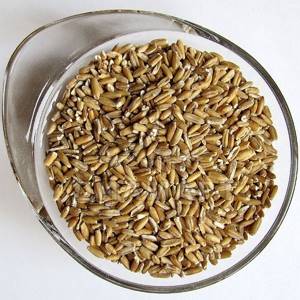
Oatmeal is different from cereal
But no matter how many calories there are, the benefits of consuming this product cannot be compared with any other. This cereal contains a sufficient amount of useful elements, so its regular consumption will restore metabolic processes in the body of every person. As you know, if the metabolic process occurs at the proper level, then this is already the key to good health.
Important! Many famous nutritionists from around the world recommend consuming this product in the morning.
Thus, we can say that oatmeal for breakfast is the true choice of a healthy person who takes care of himself and his loved ones, no matter how many calories are in oatmeal.
It also contains a lot of carbohydrates, which is why it is a real source of energy. But the well-known vitamin B will help normalize the process of digesting food. In addition, it has a great effect on the condition of the skin. Oatmeal is especially useful for people who suffer from various allergic rashes. It will also help with severe diarrhea or bloating.
Bones will also become stronger if you regularly consume this cereal. Thanks to the presence of phosphorus and calcium, hair, nails and bones can be well strengthened. From this we can conclude that oats are very useful for those people who suffer from diseases of the musculoskeletal system.

Well-known nutritionists recommend consuming this product in the morning.
The positive effect of this product on the vegetative-vascular system is known. Thanks to the presence of iron and other minerals, the heart and blood vessels will also become stronger.
I would also like to add that the fiber contained in cereal grains is very beneficial for the stomach and can prevent the formation of stomach cancer, and perfectly normalizes the functioning of the endocrine system.
Products that contain iodine are very suitable for normalizing mental activity, so oats will be useful in this case as well. But vitamins E and A will make the skin younger and healthier, they will perfectly relieve muscle fatigue.
How many calories are in 100 grams of ready-made oatmeal with additives?
When compiling a diet and counting the total number of calories, you should understand that the energy value of oatmeal depends on the additives used. After all, the calorie content of dry oatmeal and the finished product with honey, butter or milk differs by the same 100 grams.
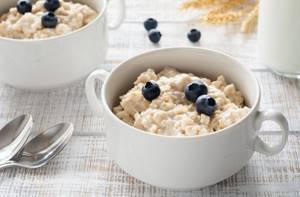
Photo source: shutterstock.com
Oatmeal without sugar, butter and honey contains only 68 kcal per 100 grams of product. BJU indicators: 2.30 g / 1.12 g / 12.64 g.
The energy value is 108 kcal per 100 g of product. BZHU indicators: 2.23 g / 1.10 g / 20.25 g.
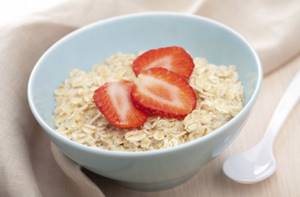
Photo source: shutterstock.com
The energy value is 120 kcal per 100 g of product. BZHU indicators: 2.42 g / 5.60 g / 13.43 g.
The energy value is 99 kcal per 100 g of product. BZHU indicators: 2.35 g / 1.49 g / 18.10 g.
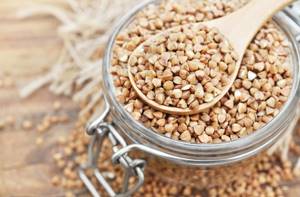
Oatmeal with milk without sugar, butter and honey contains 101 kcal per 100 grams of product. BJU indicators: 3.43 g / 3.78 g / 16.07 g.
The energy value of oatmeal cooked with milk and sugar is 146 kcal per 100 grams of product. BZHU indicators: 3.29 g / 3.58 g / 24.10 g.

Photo source: shutterstock.com
The energy value of milk oatmeal with butter is 158 kcal per 100 g of product. BZHU indicators: 3.56 g / 7.49 g / 17 g.
The energy value of oatmeal with milk and honey is 134 kcal per 100 grams of product. BZHU indicators: 3.51 g / 3.80 g / 22 g.
The calorie content of boiled oatmeal and steamed oatmeal is the same, but the latter is slightly healthier, since it retains more vitamins and microelements. You can learn more about the composition and beneficial properties of oatmeal from the video:
Oatmeal is considered one of the most healthy and low-calorie types of porridge. It is most convenient to prepare it in the form of flakes. In essence, they are the same grains, only pre-processed, steamed and flattened, but with the shell preserved. The calorie content of oatmeal per 100 grams, as well as the finished dish, will depend on the type of cereal chosen, as well as the method of their preparation. Flakes can have different shades, shapes and sizes, which determine the content of useful components and the number of positive properties. But in any form, oatmeal charges the body with energy, vigor, and gives a feeling of fullness.
What are the best dishes to use oats in?
If we talk about how to properly prepare cereal, there are a lot of tips. Let's say you can make oatmeal with milk and also add raisins to it. But here another question immediately arises: how many calories are in oatmeal with milk? For example, if we are talking about porridge with milk, then it will contain about 102 kcal, but if you add raisins, you will end up with about 130 kcal.
Important! Many nutritionists recommend eating oats that are cooked exclusively in water, then they retain all their beneficial properties.
Well, regarding how many calories there are in boiled oatmeal with water, of course, there are much fewer of them here, about 88 kcal. By the way, this porridge is very useful for diabetics, as it contains a very low glycemic index.
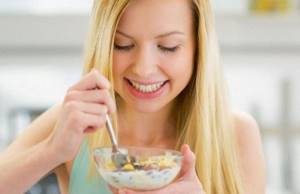
Oats help overcome stress and depression
It should be noted that regular consumption of cereal will help reduce cholesterol levels and help avoid the formation of harmful cholesterol plaques. Well, the main quality of oats is that it will help overcome stress and depression.
But, in addition to everything that is said above, many representatives of the fair sex are interested in how many calories are in boiled oatmeal. It all depends on what recipe it is prepared according to. For example, if you add butter, you get about 117 kcal. You can also add honey to the cereal, then you get about 114 kcal.
Now it has become clear how many calories are in oatmeal with milk and how many calories are in oatmeal with honey, because this is the cooking method most often chosen by most consumers of this product. By the way, due to the fact that oatmeal is easily digestible, it can be safely consumed if you want to lose weight.
Very often, everyone who is going to lose weight first studies information about a particular product that they will have to consume.
Accordingly, when they see how many calories are in oatmeal, they begin to doubt whether such a diet can give the desired results. Everything is simple here, and there is nothing to be afraid of; oats really help you lose extra pounds.
Compound
Oatmeal is the most popular and sought after breakfast dish by many, which is hearty, nutritious, and full of nutrients.
The table shows the ratio of KBZHU oat flakes per 100 g:
| Name | Index |
| Squirrels | 11.9 g |
| Fats | 7.2 g |
| Carbohydrates | 69.3 g |
| Calorie content | 88 kcal |
The structure of oatmeal is the same as coarse dietary fiber; when it enters the stomach, it gradually absorbs liquid and swells. As they move further through the gastrointestinal tract, they absorb waste and toxins and cleanse the body. Oatmeal contains fiber, which has a positive effect on metabolism and improves digestion.
Even a small portion of oatmeal is a storehouse of vitamins and microelements, including:
- vitamins E, H, PP, K, NE, group B;
- magnesium, potassium, manganese, sodium, fluorine, iron, chlorine, iodine, calcium, zinc, copper, phosphorus.
Calorie content of 100 grams of oatmeal
You can find out how many calories are in oatmeal by taking into account the method of its preparation and additional ingredients.

According to the classic recipe, a large number of people prepare oatmeal with milk. The calorie content of this dish is 102 kcal. Usually served tomorrow for both adults and children. Flakes cooked in milk retain their shape, the dish does not turn out liquid.
Those who are used to eating sweet porridge, but want to give up sugar, can replace it with a natural sweetener - honey. The calorie content of the finished dish with honey will be 84.5 kcal.
If you prepare the dish in the standard way and cook oatmeal in water, the calorie content of the dish will be 88 kcal. This is the most common cooking option.
How to cook with oatmeal

Oatmeal in Great Britain is a national dish; paintings by famous artists are dedicated to it.
To understand how many calories are in oatmeal with water, you need to know how to properly prepare such porridge, and what else needs to be added to it. The answer to the question of how many calories are in 100 g of oatmeal is quite simple: this amount of product contains only 303 kcal. This:
- proteins - 11 g per 100 g of product;
- fats - about 6 g per 100 g of product;
- carbohydrates - 100 g of oatmeal contains 65.5 g of them.
Of course, the calorie content of the finished dish depends on the recipe. Indeed, in addition to ordinary porridge, you can make soup, confectionery and even a drink from oatmeal. Accordingly, the number of calories in each dish varies significantly.
For example, a dietary dish such as slimy soup contains the least amount of calories, but pancakes or baked goods made from grain flour will be a little more satisfying.
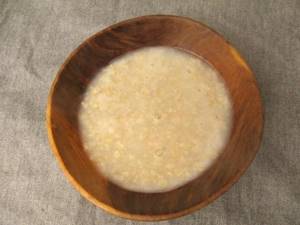
Oatmeal cooked in water contains minimal calories
So, what can you prepare from this cereal:
- soup;
- jelly;
- milk soup;
- smoothie;
- cream soup;
- beer.
Speaking of the last point, there are certain types of beer to which this grain is added. After which the drink acquires a special aroma and taste.
The cereal also contains useful substances such as:
- folic acid;
- vitamins A and B;
- ascorbic acid;
- choline and much more.
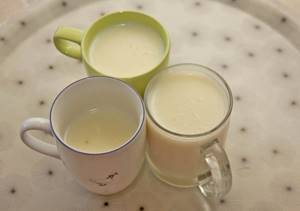
You can prepare various dishes from oats, for example, jelly
In addition, there is:
- iron;
- potassium;
- phosphorus;
- manganese;
- calcium;
- magnesium.
Well, regarding how many calories are in oatmeal, you should always remember that in this case everything depends on the composition of the main dish. Each of the ingredients has its own separate composition.
The benefits of oatmeal
Oatmeal included in a person’s diet will have a positive effect on his health. If you eat at least a portion of oats every day, the functioning of the nervous system improves and the immune system is strengthened.
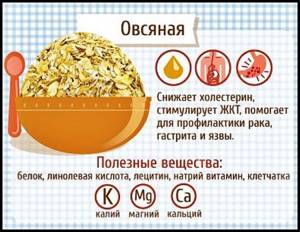
Huge benefits for the body:
- reducing cholesterol levels and the likelihood of stroke, heart attack, atherosclerosis;
- reducing the risk of cholesterol plaques;
- eliminating drowsiness, energizing, gaining strength;
- combating depression, irritability and nervousness;
- reducing the likelihood of the occurrence of a disease such as tuberculosis, as it suppresses the bacilli of the infectious agent;
- normalization of the functioning of the thyroid gland;
- strengthening muscle and bone tissue, so porridge is recommended for athletes;
- cleansing the body of toxic substances and waste.
It is also recommended to consume oatmeal for those people who have the following problems:
- decreased immunity;
- diabetes;
- diseases of the circulatory system;
- malfunction of the brain, memory loss;
- brittle nails, hair loss.
Its main advantage is that the flakes are easily absorbed by the body. The composition includes complex carbohydrates, but they are responsible for saturating the body with energy.
Composition and beneficial properties of oatmeal with water
Oatmeal with water is rich in valuable vegetable proteins. It has a high content of vegetable fats and, therefore, high energy value. Contains gluten. This cereal also has the highest dietary fiber content. It contains vitamins B1, B2, PP, E, calcium salts, phosphorus, iron and magnesium. Feature of the porridge: high total nutritional value. It is an excellent adsorbent of heavy metal salts, which is especially important for residents of large industrial cities.
In terms of protein content (13 percent) and fat content (6 percent), oats are the leader among grains. Protein substances are represented by avenin and avenalin, which contain all the essential amino acids and are therefore considered complete. In addition, these proteins are also perfectly digestible (calorizator). The high starch content of cereals adds nutritional value to foods. Oat fats are distinguished by a high proportion of unsaturated fatty acids, but, unfortunately, they are very unstable, and it is because of this that oatmeal can quickly deteriorate during storage.
Nutritionists recommend oatmeal for liver diseases, atherosclerosis, and diabetes. But still, the main value of oats is its exceptional benefits for the stomach and intestines. Oatmeal, as it were, envelops the stomach with a film that facilitates digestion. Oat grains, even crushed into flakes, act as an intestinal cleanser, removing all the “garbage” from it. Mucous oat decoctions are necessarily included in the menu of strict diets for gastric and duodenal ulcers.
Many people eat oatmeal for breakfast and thus avoid problems with the gastrointestinal tract. Cardiologists recommend it as a prevention of heart disease and lowering blood cholesterol levels. Oatmeal is an indispensable dish when recovering from a serious illness. A bowl of oatmeal contains a quarter of the daily requirement of soluble fiber, and three-quarters of a glass of dry rolled oats covers the entire daily fiber requirement. It also contains relatively a lot of silicon and zinc, which are so necessary for both adults and children. In addition, oatmeal perfectly “cleanses” the intestines.
Harm of oatmeal
Oats are valued for their numerous beneficial properties and rich vitamin and mineral composition, but they also have certain disadvantages. Not all people can eat oatmeal. This should not be done by those who have allergies, intolerance to the product and its components, as well as people with celiac disease.
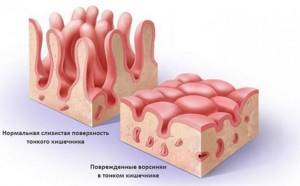
This disease does not allow the body to absorb the components that cereals are rich in. They are also found in oatmeal.
Please note: If you do not eat oatmeal in moderation, calcium will gradually begin to be washed out of your bones. And this will further lead to bone deformation. Phytic acid from their composition, if accumulated excessively in the body, will also negatively affect bones.
Instant oatmeal is not considered beneficial for the body. They are usually sold in single-serve, single-serve packets. It takes 5-10 minutes to brew them. But these flakes are practically devoid of useful elements and vitamins. Instead, you can find preservatives and sweeteners in the composition, which are harmful to both a healthy body and a patient with diabetes.
Useful properties of oatmeal
This cereal is not only the healthiest, but also one of the components of dietary dishes. It can be prepared with either water or milk. Oatmeal is made from oats, which can be considered a young crop.
To obtain oat flakes, it is customary to first grind them, and only then flatten them. Then the resulting product is squeezed out of the oil, and everything that comes out is subjected to heat treatment.
After all these procedures, oatmeal turns out fragrant and crispy. The difference between the grains themselves and the flakes is insignificant. It is from grains that oatmeal and bran are usually made.
Porridge is useful not only for children, but also for adults. It contains a fairly large amount of vegetable protein, which is the one that provides the greatest energy value.
Oatmeal can be considered an excellent absorbent, which is why it is so important to consume it daily for people who live in vast industrial regions.
Rules of use
Many people are interested in the calorie content of oatmeal, since even nutritionists are confident that it is a potion of youth. The calorie content of the finished dish is relatively low, considering the benefits it brings to the body. It can charge the body with energy and give a feeling of satiety, thanks to which a person will not feel hungry for 3-4 hours. In order for the cereal to be as beneficial as possible for the body, you need to study all the methods of preparing it correctly and choose the most suitable one for a specific purpose.
Pregnant women are recommended to include oatmeal in their diet, as it not only benefits the body, but also helps cope with the following tasks:
- replenishment of vitamins and microelements for the proper formation of the child’s muscle and bone skeleton;
- elimination of brittle nails and hair loss, which is facilitated by B vitamins;
- normalization of the functioning of the central nervous system, its protection from stress and overexertion;
- fiber from the composition helps prevent the problem of constipation, which pregnant women often face;
- porridge rich in valuable components helps prevent the appearance of stretch marks on the skin;
- Nervousness, fatigue and anemia disappear due to the sufficient amount of iron in the flakes.
It is especially useful for pregnant women to consume oatmeal in the third trimester to eliminate the risk of complications in the fetus. Porridge does virtually no harm, only its excessive consumption.
After the birth of a child, the female body experiences severe stress; health needs active restoration during the lactation period. Therefore, it is so important to monitor your diet and choose only the right easily digestible foods for it. This is exactly what oatmeal is. Thanks to her, excess weight will not accumulate in the young mother’s body. The whole complex of vitamins and microelements in the cereal will also be useful for the child.
It is important! It is boiled oatmeal in water that takes care of the digestive system of a young mother, cleanses the body of waste and toxins, increases its defenses, and speeds up metabolism.
You also need to choose oatmeal for a nursing woman correctly. It should not contain dyes, preservatives, or palm oil, which are harmful to the health of both mother and baby. Also, it should be introduced into a woman’s diet gradually, checking the child’s reaction to this product. If there are no allergies, colic or problems with stool, then you can safely leave oatmeal in your diet. The maximum allowable amount for a nursing mother is 200–250 g of oatmeal per day.
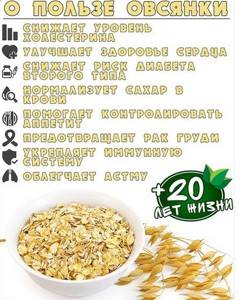
In many weight loss diets, oatmeal is one of the main dishes in the diet. In order for a dish to have a minimum calorie content, the flakes must be prepared without adding salt, sugar, oil or other additives.
Note! You can start protein metabolism, increase muscle mass, and reduce body fat by eating oatmeal.
Many people often associate oatmeal with weight loss due to the following factors:
- Although the calorie content of oatmeal is low, it provides great satiety for a long time;
- the desire to eat sweets is suppressed;
- the body is saturated with important vitamins and microelements;
- a charge of strength and vigor appears, which is enough for training;
- the intestines are cleansed of waste and toxins;
- the condition of the skin improves, it cleanses, becomes more elastic and toned;
- oatmeal is combined with other ingredients and additives, so that a diet based on it can be varied.
You can introduce oatmeal into the diet of babies when they start complementary feeding. On average, this indicator is 6–7 months, but in each individual case it is selected individually. For small children, oatmeal is prepared in a special way: initially, the flakes are ground to flour, portions are measured in tablespoons, then boiled in water or milk formula. After 1 year, a child can be given oatmeal in its natural state without grinding and cooked with milk, if the child’s body does not have an allergic reaction to it.
Practical advice: Not all children are ready to eat oatmeal for breakfast or dinner without problems, so it can be introduced into their diet by adding it to baked goods, desserts, casseroles, soups and other dishes. However, classic oatmeal is considered the most healthy.
How to cook oatmeal with milk correctly
If you have never cooked oatmeal with milk, it will be useful for you to consider the following recommendations when preparing the dish. The most popular recipe for oatmeal with milk involves the use of the following dish ingredients:
- 1 cup whole grain oatmeal;
- 2 glasses of fresh milk;
- 1 pinch of salt;
- 4 tablespoons sugar;
- 45 g butter.
Steps for preparing oatmeal with milk:
- Oatmeal grains are thoroughly washed with cool water and soaked in a pan of water for about 15 minutes. This soaking will reduce the cooking time of the porridge;
- Milk is poured into a clean saucepan. It is brought to a boil over low heat, without leaving it unattended so that it does not escape;
- Oatmeal is poured into boiling milk. The mixture is stirred and simmered over low heat for 15 minutes;
- after removing from the heat, the porridge is infused for 4 - 5 minutes;
- After this, add 45 g of butter to the oatmeal. Cover the porridge with a lid and leave with oil for another 5 minutes;
- Now you can eat porridge. For those with a sweet tooth, it is recommended to add jam, honey, and dried fruits to it.
SUBSCRIBE TO SITE UPDATES
Oatmeal with water is considered one of the most dietary dishes; moreover, it helps to cope with many diseases and is an excellent preventive measure.
Oatmeal with water is also a very tasty dish, even though it does not contain milk. Here you will learn the recipe for “oatmeal with water”.
Oatmeal (oatmeal)
- porridge prepared from oatmeal (or oatmeal). Considered a healthy breakfast. Among the countries where this dish is common are England, Scotland and Russia. Calorie content of oatmeal with water
The calorie content of oatmeal with water is 88 kcal per 100 grams of product.
Oatmeal on water - calorie content of finished porridge cooked on water per 100 g: Calories, kcal: 88 Proteins, g: 3.0 Fats, g: 1.7 Carbohydrates, g: 15.0
Oatmeal in cooking
Preparing this dish is very easy and simple, you will need:
- oat flakes – 150 g;
- banana – 1 pc.;
- glass of water;
- yogurt – 250 g;
- honey – 1 tbsp. l.;
- cinnamon – ½ tsp;
- any fruits and berries.
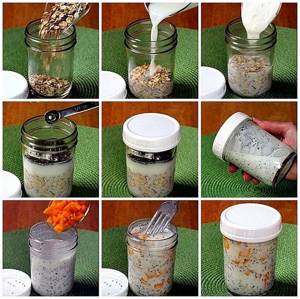
Cooking steps:
- mash the banana in a bowl;
- add all ingredients except fruits or berries;
- to stir thoroughly;
- pour the finished mixture into small jars;
- place in the refrigerator overnight;
- Before use, remove and add finely chopped fruit.
The dish is ready to eat.
To prepare you will need:
- 300 g of flakes;
- favorite nuts to taste;
- honey 2 tsp;
- one apple.
Preparation:
- cook oatmeal in water;
- add honey to warm porridge until completely dissolved;
- Add chopped nuts and apple to a portion of oatmeal.
Other fruits or berries can serve as an alternative to apples.
Not only does oatmeal in the form of traditional porridge promote weight loss, but also as an ingredient in cocktails and smoothies.
Ingredients:
- 20 g oatmeal;
- 50 g strawberries;
- 1 banana;
- vanillin;
- 100 ml water.
Pour boiling water over half the flakes, add the main ingredients and beat until smooth. Then add the remaining dry flakes. It is better to prepare smoothies in portions for instant consumption.
Oatmeal and its properties
For many centuries, oatmeal continues to be one of the most popular dietary and healthy dishes. It is prepared with water or milk from cereal or flour.
. Oatmeal is obtained from oats, which are a young crop compared to wheat.
To get the oat flakes we are used to, oat grains are first ground and then flattened. After this, the oil is squeezed out, the rest of the product is subjected to heat treatment. All processing methods used help to obtain grain that is more saturated, aromatic and crispy. The composition of flakes differs from grains, but only slightly. Oatmeal and bran, which are most often used in production, are also obtained from the grains.
Oatmeal is nutritious and healthy
. Depending on the type of oatmeal, the cooking time will vary. You can diversify them with various products:
- fresh fruits and berries;
- dried apricots;
- raisins;
- honey, etc.
Oatmeal contains a large amount of vegetable protein and carbohydrates. Despite this, it is considered a healthy dietary dish. The product also contains a lot of carbohydrates, which does not prevent it from being easily absorbed by the body. Regular use of this product has a positive effect on health and appearance.
Rules for selecting and storing oatmeal
The first thing you should pay attention to when buying oatmeal is its packaging. The peculiarity of the cereal is that it quickly absorbs moisture, so the packaging must be intact and airtight. The next thing to check is the expiration date, which is calculated from the date of production, but not from the date of packaging.
Please note: You also need to pay attention to the composition, which does not contain harmful impurities, carcinogens, or sweeteners. You can often see the words Fitness or Light on packages of oatmeal. Most often this is just an advertising campaign to attract attention.
It is actually very difficult to find truly healthy oatmeal on store shelves. If the flakes are slightly toasted, they will no longer bring any benefit to the body. It is better to take the flakes in their pure form and make healthy porridge from them yourself, adding dried apricots, raisins, nuts, prunes and other dried fruits.
If you add sweets, candied fruits, chocolate, and flavorings to the porridge, the dish will no longer be considered healthy for the body; its nutritional value will increase significantly. You need to choose the oats that go through the minimum number of processing stages. Although this type of cereal is considered the most healthy, it will take much longer to prepare.
Note! Cereals absorb moisture very quickly, so they should be stored in a dry place. The container can even be cellophane and cardboard.
The shelf life will depend on the type of packaging and storage conditions. For example, in cellophane it will be 1 year, in cardboard a maximum of 4 months. If you store cereal in store-bought packaging, there is a high probability that bugs will infest it.
Types of containers for storing cereals:
| Type of container | Advantages | Flaws |
| Metal | They look high quality and stylish. | Risk of rust. |
| Plastic | Very light, the load on shelves and cabinets is minimal. | Frequent change of cans. |
| Ceramic | Beautiful design, roomy, affordable dishes. | Quite a heavy container. |
| Glass | Beautiful design, light, spacious, affordable dishes | Not found |
Oatmeal is a delicious, healthy, satisfying and healthy breakfast that is suitable for adults and children. You can prepare such a dish every day, because it has a lot of useful properties, low calorie content, a minimum of contraindications, and the most affordable price.

